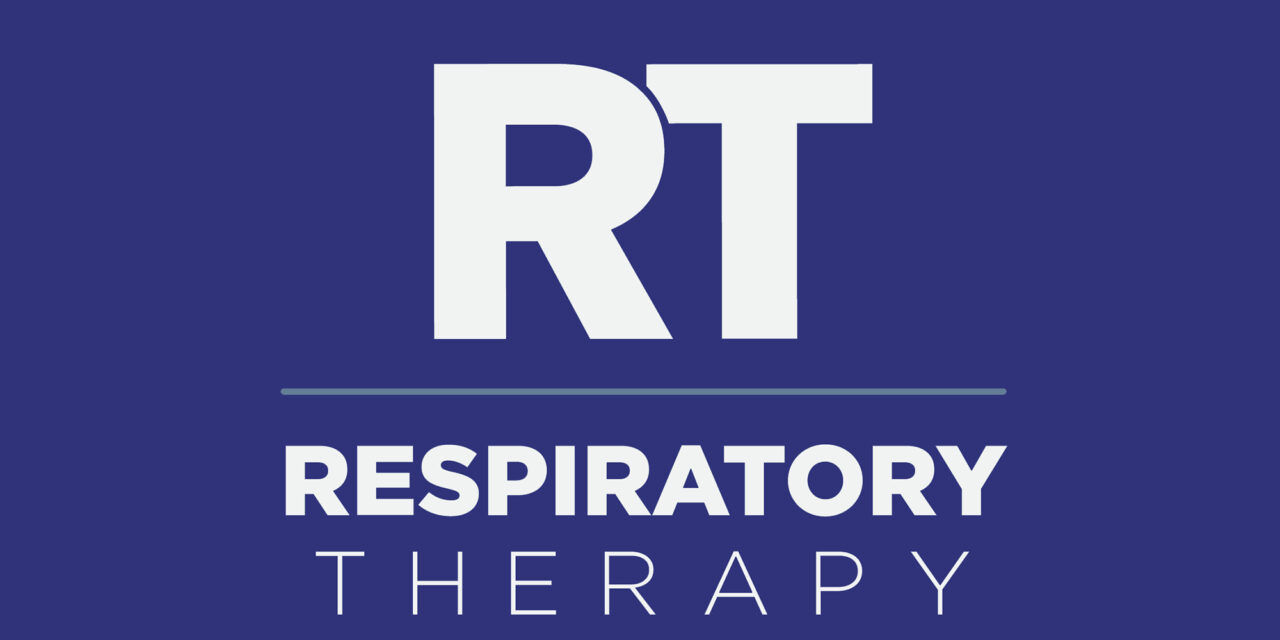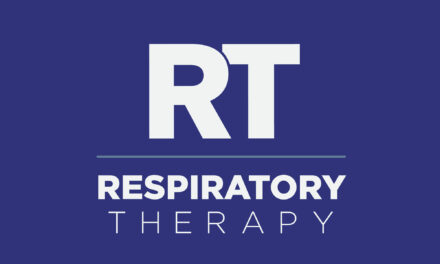RT’s 2006 Respiratory Therapy Salary Survey finds salaries increasing for respiratory care practitioners but still lagging behind other allied health professions.
By Renee Diiulio
Respiratory therapists love their jobs. Why else would they stay in a position that some feel does not offer the same salary or respect as other allied health professions. “I would recommend my profession for the love of the job not because of what it pays,” commented one therapist who responded to RT’s 2006 Respiratory Therapy Salary Survey.
And while enjoying one’s job makes for a rewarding day, it does not put food on the table. Fortunately, most RTs are not poverty-stricken, at least not according to the United States Department of Health and Human Services (HHS) poverty guidelines, which define poverty as one individual earning $9,800 annually in the contiguous United States (alternate figures are provided for multiperson households, as well as Alaska and Hawaii). According to RT’s salary survey, the majority of the 1,192 respondents earned between $40,000 and $70,000 last year, well above the poverty line, which has been true since RT first conducted the survey in 2003.
Even better news is that more therapists are reporting salaries greater than this group rather than lower, a balance that has changed over the past 4 years. In 2003, the first year RT collected salary data, 19.8% of respondents earned less than $40,000 and 11.8% earned more than $70,000. In 2006, only 13.5% of respondents reported earning less than $40,000, while 19.2% earned more than $70,000.
Some might think the salary changes are more reflective of an aging and more experienced workforce, but experience and age actually dropped slightly from last year. Roughly 55% of respondents reported their age as greater than 45 years versus 57% last year. Similarly, 59.6% of respondents reported more than 16 years of experience, versus 62.6% last year.
Unfortunately, new recruits have remained about the same, near 3%. “[It’s] extremely difficult to recruit RCPs. Schools [are] not putting out enough RCPs.” Even if they do, the new RCPs may not necessarily become old hands. “[There are] no dedicated students entering the field of respiratory therapy for the long term. It’s just a stepping stone to other medical careers, like PA [physician’s assistant] school, nursing, etc,” wrote another respondent, who blamed “dismal” salaries.
For the Love of Money
Many respondents agreed that salaries should be higher. “Starting pay is OK, but the long-term compensation does not compare to other professions. If I had been in another field for 20 years, my salary would be much higher,” commented one respondent. Another was more blunt: “The current level of pay being offered to RTs is downright criminal.”
Many compared their salaries to those in nursing, radiology, physical therapy, occupational therapy, and speech therapy and found them wanting. Said simply: “I feel our profession is grossly underpaid compared to other allied health positions.” But are they really?
Survey Says…
RT summarizes some of the survey statistics.
Demographics
- RT sent its annual salary survey to approximately 20,000 readers in February 2006 and received back 1,192 completed questionnaires, a 6% response rate.
- The survey was broadly distributed, with responses received from every state in the United States and Puerto Rico.
- The majority of respondents (70.5%) reported having RRT credentials; 43.3% had their CRT, and 17.1% were certified RCPs.
- Nearly half (48.6%) reported hands-on practice as their major responsibility while 29.9% function as administrators. The remainder works in education (9.6%), research (0.5%), consulting (0.8%), or other (10.6%).
- More than half (59.6%) of respondents had more than 16 years of experience; this figure expands to three quarters (75.3%) when those with 11 years or more of experience are included.
- Reported ages correlate with experience: more than half (54.8%) were older than 45 years.
- Gender was nearly even: 54% identified themselves as female and 46% male.
- While the majority of patients work in a hospital venue (73.7%), the same cannot be said for the setting: 45.4% work in an urban area, 29.9% practice in the suburbs, and 24.7% provide rural care.
- Nearly one third (30.8%) of respondents work in a large department, with 26 or more full-time employees (FTEs); the next largest group works with far fewer people: 16.9% reported one to three FTEs in their department.
Compensation and Benefits
- A majority of the respondents (47.7%) reported earning between $40,000 and $60,000 annually, while 38.7% reported earning more than $60,000 per year and approximately 13.5% reported earning less than $40,000 per year.
- More than half (56.6%) are paid extra for nights, but less than half (42.5%) are paid extra for weekends.
- Nearly two thirds (60.8%) reported a raise last year, and one third (33.1%) have already received raises this year.
- Respondents receiving raises most often reported a 1% to 3% increase (59.4%), although nearly one third (30.3%) received a 4% to 6% raise.
- The majority of respondents received well-rounded benefits plans, including: 401k and/or profit sharing (65.7%) Continuing education (64.3%) Disability insurance (65.6%) Health insurance (89.9%) Life insurance (80.4%) Tax shelter for retirement savings (50.7%) Tuition reimbursement (71.6%) Vacation/sick time (95.5%)
- Fewer respondents reported receiving malpractice/liability insurance (26.1%) or paid professional association dues (16%).
- More than two thirds (68.2%) have their major medical benefits paid in full or in part by their employer.
Job Market and Other Observations
- The job outlook for respiratory care continues to expand. Of the 1,192 respondents, 922 or 77.3% indicated openings in their departments. The majority of these, 71.1%, have one to three positions open.
- Most respondents (88.2%) would recommend their profession to others.

Nearly half (47.7%) of the respondents to RT’s salary survey reported earning between $40,000 and $60,000, with just more than two thirds (67.2%) earning between $40,000 and $70,000. Compare to data on other professions from Salary.com, the median US salary for a typical:
- Occupational therapist in a nursing home is $64,657;
- Chief radiologic technologist is $62,567;
- Staff nurse (RN) is $58,365;
- Ultrasound technologist is $56,994;
- Interventional radiological technologist is $56,088; and
- Licensed practical nurse in the United States is $36,911.
Using either RT’s median salary of $54,000 or Salary.com’s median salary for a typical certified respiratory therapist in the United States of $41,637, complaints about unequal pay are justified in most cases.
But what to do about it? One respondent recommended more association involvement: “[We] need to have more RTs join AARC [American Association for Respiratory Care, Irving, Tex]. With this will come respect and with that comes responsibility. Then pay will increase.” Another suggested appealing to management: “Our department recently lobbied for and won a pay increase to bring us up closer to the San Francisco Bay area scale in an effort to fill our three part-time and two per diem positions.”
For the Good of the Industry
Quite a few respondents, 77.3% or 922, reported having open positions in their departments. Of this group, 71.1% have one to three openings, 14.8% have four to five; and the remainder are hiring even more. Both the AARC and the US Department of Labor Bureau of Labor Statistics (BLS) expect this need to grow.
The BLS states that respiratory therapists held about 118,000 jobs in 2004, with more than four out of five of them in hospital departments of respiratory care, anesthesiology, or pulmonary medicine.1 The majority of RT salary survey respondents also work in a hospital with nearly three quarters or 73.7% reporting this setting.
The field is expected to grow by 27% or more by 2014, according to the BLS.1 Factors include the “substantial growth in the numbers of the middle-aged and elderly population—a development that will heighten the incidence of cardiopulmonary disease—and because of the expanding role of respiratory therapists in the early detection of pulmonary disorders, case management, disease prevention, and emergency care.”1 Additionally, advances in inhalable medications and in the treatment of lung transplant patients, heart attack and accident victims, and premature infants will also increase demand for respiratory care services.1
As the need for these specialists grow, it is possible the demand will result in higher pay. Hopefully, it will also result in more respect; a number of survey respondents feel their work is not appreciated. One respondent felt that professionals were leaving the field as a result.
But in general, those providing respiratory care love their jobs. Most respondents (88.2%) noted they would recommend the profession to someone else. One respondent simply wrote: “29 years in the field and still loving it.”
RT
Renee Diiulio is a contributing writer for RT. For more information, contact [email protected].
Reference
- US Department of Labor Bureau of Labor Statistic. Respiratory Therapists. Occupational Outlook Handbook. Available at: http://www.bls.gov/oco/ocos084.htm. Accessed on June 12, 2006.










